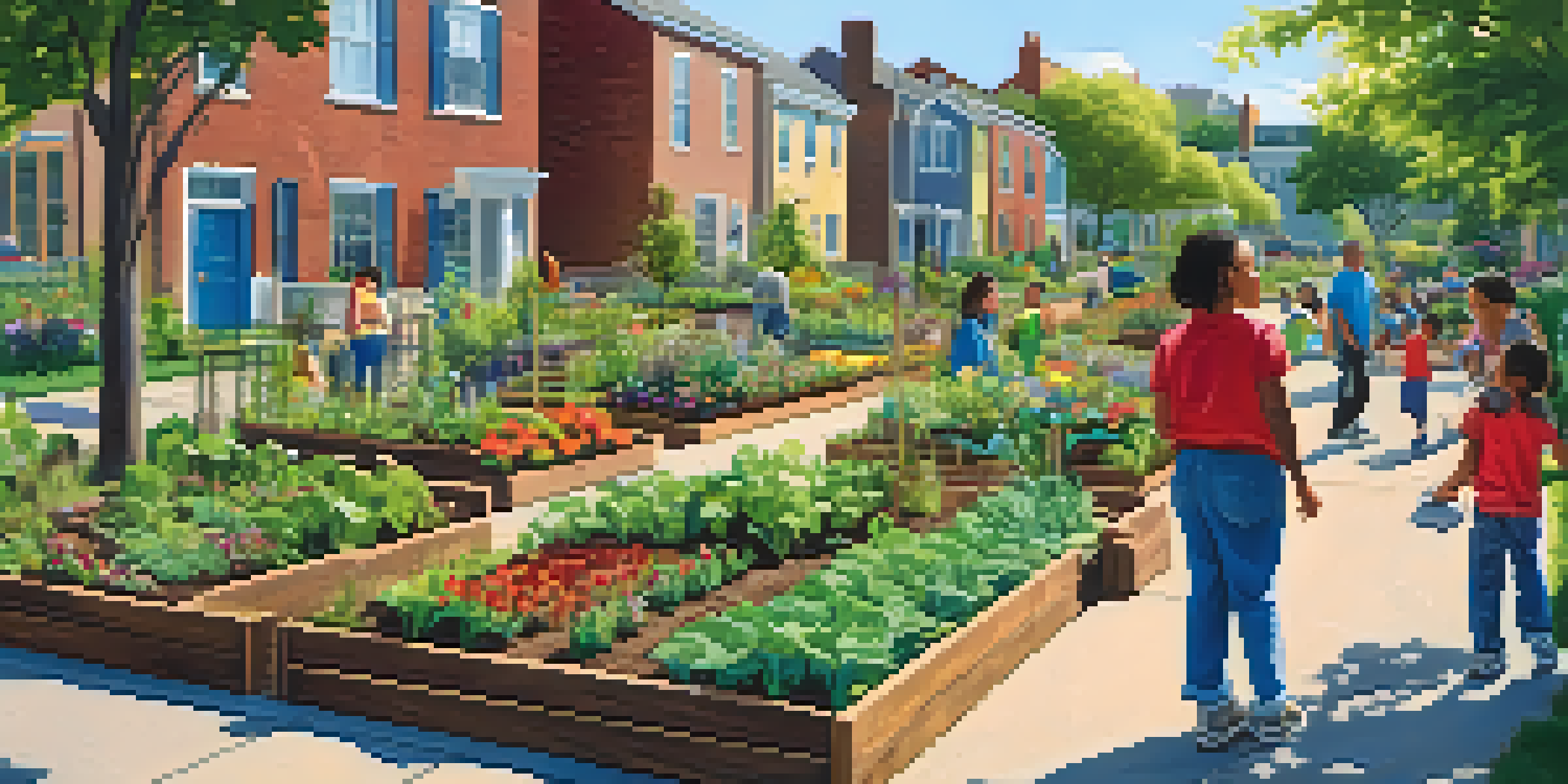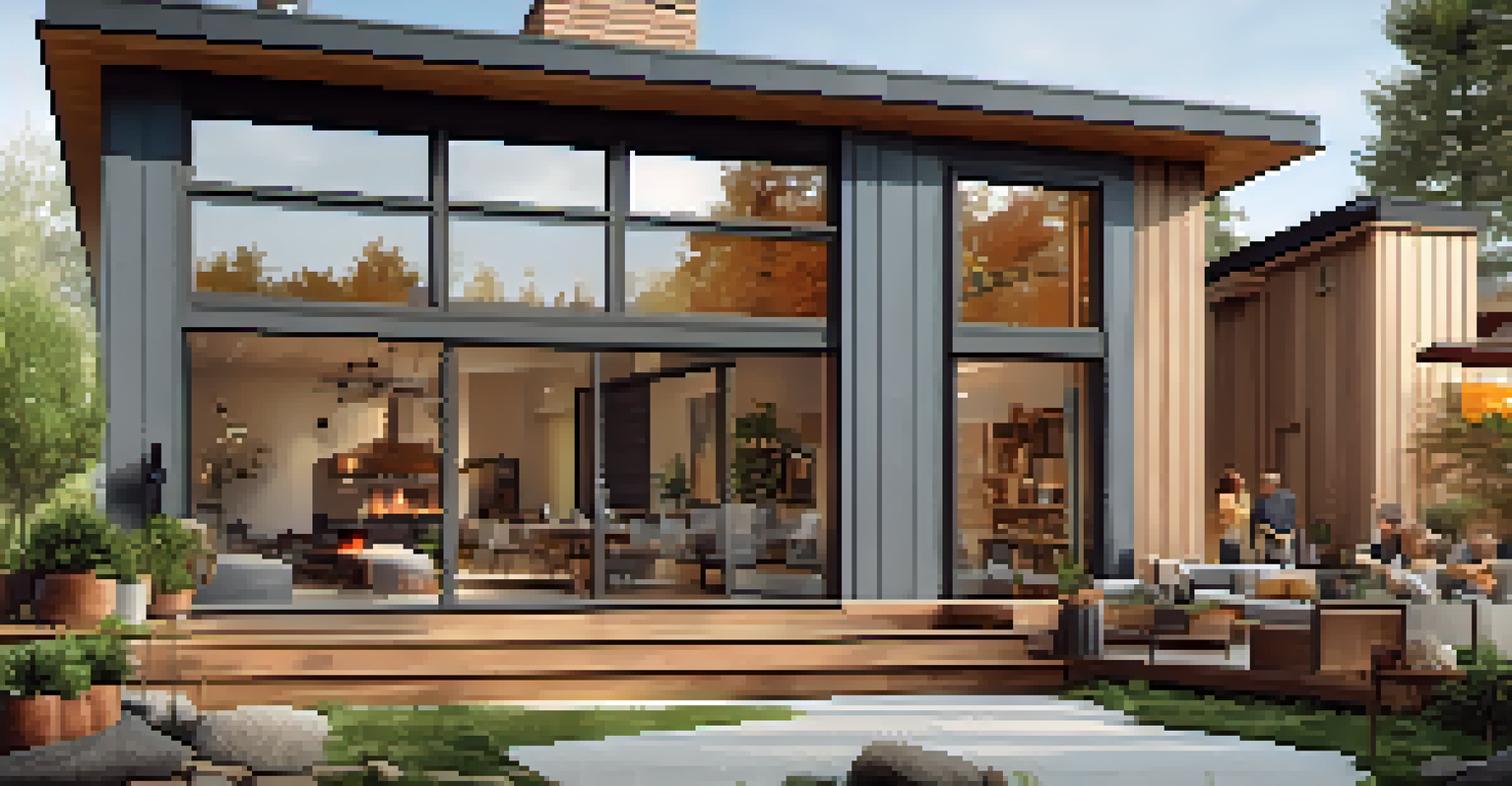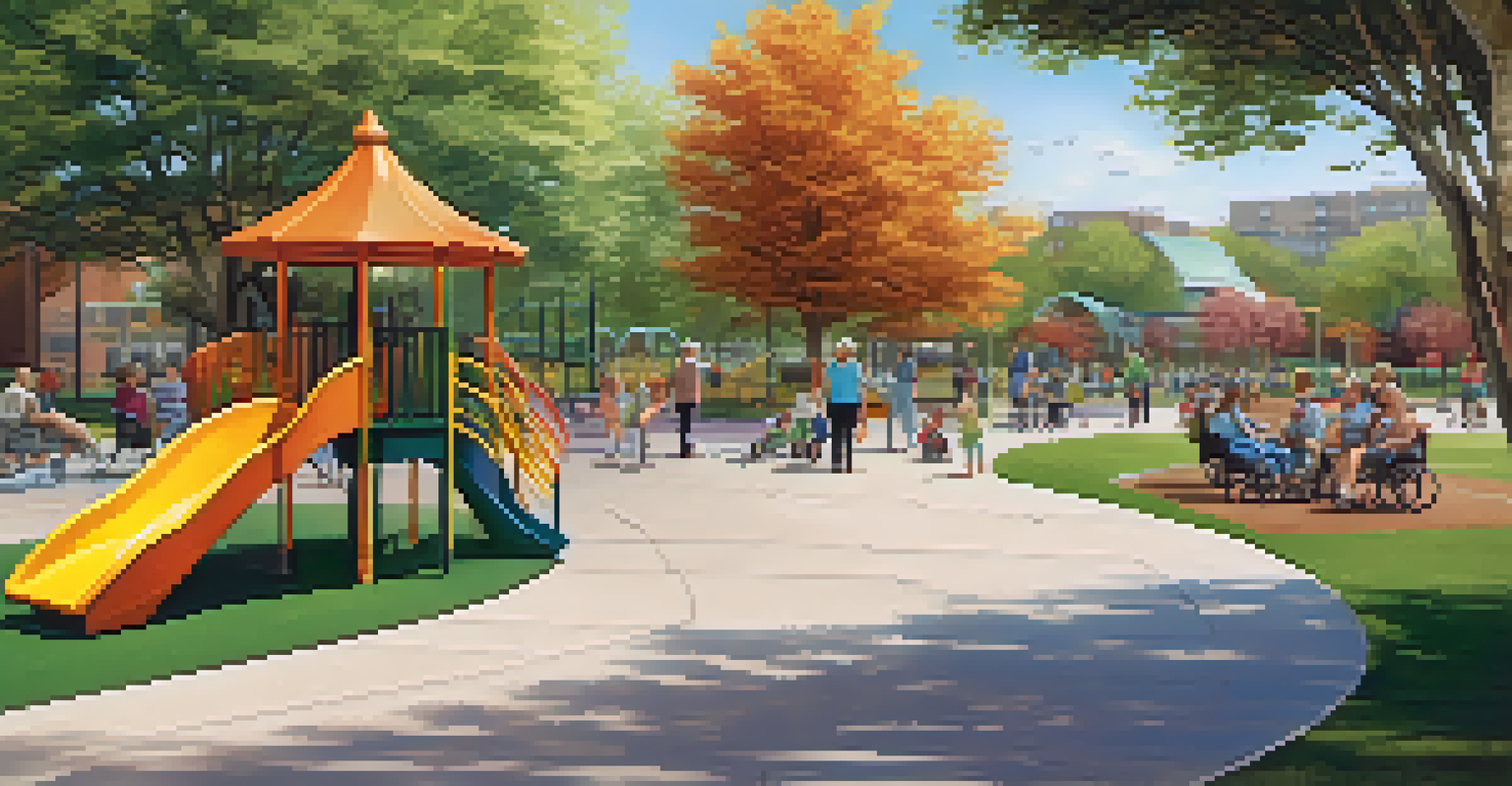Home Design and Community: Future Trends in Neighborhoods

Embracing Sustainability in Neighborhood Design
Sustainability is no longer just a buzzword; it’s becoming a core principle in home design and community planning. With an increasing awareness of climate change, neighborhoods are incorporating eco-friendly materials and energy-efficient designs. Think solar panels on rooftops and rain gardens that help manage stormwater runoff. This shift not only helps the environment but also creates healthier living spaces for families.
Sustainable design is about more than just energy efficiency; it's about enhancing the quality of life for people and the planet.
Moreover, sustainable neighborhoods are often designed with walkability in mind, reducing the need for cars and promoting a sense of community. It's common to see homes closely situated to parks, shops, and schools. This integration encourages outdoor activities, which can lead to stronger social bonds among residents. Imagine stepping out of your front door and being just a short stroll away from your favorite coffee shop or community garden.
As we look to the future, expect to see even more neighborhoods adopting sustainable practices, such as zero-energy homes and communal spaces designed with nature in mind. These innovations not only support a healthier planet but also enhance our quality of life, making sustainability a win-win for communities.
Smart Homes: Technology Meets Community Living
The rise of technology is transforming how we live, and smart homes are at the forefront of this trend. Equipped with devices that control everything from lighting to security, these homes offer unparalleled convenience. Imagine being able to check on your home or adjust your thermostat from your smartphone while you’re at work or on vacation.

But it’s not just about individual convenience; smart home technology can enhance community living as well. Neighborhoods can utilize shared platforms for communication, allowing residents to coordinate events, share resources, or even report issues. This interconnectedness fosters a sense of belonging and makes it easier for neighbors to collaborate on community projects.
Sustainability Shapes Neighborhoods
Eco-friendly designs and walkable layouts foster healthier communities.
As we advance, expect to see neighborhoods that fully integrate smart technologies, creating a seamless living experience. This could range from smart streetlights that adjust based on pedestrian activity to community-wide Wi-Fi networks that keep everyone connected. The future of home design will not only focus on the individual but also on enhancing the overall community experience.
The Rise of Multi-Generational Living Spaces
As family dynamics evolve, so do our living arrangements. Multi-generational homes are becoming increasingly popular, allowing families to live together under one roof while maintaining their privacy. This trend often leads to innovative home designs that feature separate living spaces, such as in-law suites or basement apartments, while still promoting togetherness in shared areas.
The best way to predict the future is to create it.
Living together can offer emotional and financial benefits, providing support for both younger and older generations. For instance, grandparents can help with childcare, while younger family members can assist with daily tasks. This arrangement not only strengthens family ties but also fosters a sense of community within neighborhoods, as families often engage more with their surroundings.
Looking ahead, expect to see more neighborhoods designed with multi-generational living in mind. Developers may create homes that cater specifically to this trend, incorporating flexible spaces that can adapt to the changing needs of families. This shift could redefine the traditional concept of home, making it a place of connection for multiple generations.
Community-Centric Spaces: The Heart of Neighborhoods
Community-centric spaces are becoming crucial in urban planning, promoting social interaction and engagement. Parks, plazas, and community centers serve as gathering spots where residents can connect, participate in activities, or simply relax. These spaces are not just amenities; they are vital for fostering a sense of community belonging.
The design of these spaces often reflects the unique culture and needs of the neighborhood. For instance, a community that values art may feature public murals and performance spaces, while another focused on wellness might prioritize gardens and fitness stations. By catering to the interests of residents, neighborhoods can create vibrant environments that encourage participation and pride.
Smart Homes Enhance Community Living
Technology integration in homes promotes convenience and strengthens neighborhood connections.
As we move forward, expect to see more investment in community-centric spaces that prioritize accessibility and inclusivity. This could mean designing parks with features for all ages or creating venues that host local events. The goal is to build neighborhoods where everyone feels welcome and engaged, reinforcing the idea that community is at the heart of home design.
Urban Agriculture: Bringing Food Closer to Home
Urban agriculture is gaining traction as a way to connect neighborhoods with fresh, local food sources. Community gardens, rooftop farms, and edible landscapes are popping up in urban settings, allowing residents to grow their own produce. This not only promotes healthy eating but also encourages community participation and collaboration.
Gardening together can create strong bonds among neighbors, as they share tips, resources, and even harvests. Imagine a weekend where families come together to tend to a community garden, cultivating not just vegetables but friendships. These shared experiences can lead to lasting relationships and a more cohesive community.
As we look to the future, urban agriculture will likely play a significant role in neighborhood design. Developers may incorporate gardens and green spaces into residential projects, making fresh food more accessible. This trend not only supports local food systems but also enhances the overall quality of life in neighborhoods, making them more vibrant and sustainable.
Flexible Spaces: Adapting to Changing Needs
In our fast-paced world, flexibility in home design is becoming increasingly important. The idea of flexible spaces allows homes to adapt to the changing needs of families—whether that means converting a guest room into a home office or creating open-concept layouts that can be reconfigured for different occasions. This adaptability ensures that homes remain functional and relevant over time.
Moreover, flexible spaces can foster a sense of community by encouraging shared usage. For example, a neighborhood might feature multi-purpose rooms that can be used for meetings, events, or family gatherings. This shared approach not only maximizes resources but also brings residents together, strengthening community ties.
Inclusive Design for All Residents
Creating accessible spaces ensures everyone can participate fully in community life.
Looking ahead, the trend of flexible spaces will likely continue to evolve, influencing how homes and communities are designed. Developers may focus on creating adaptable layouts and communal areas that can cater to a variety of uses. This shift will lead to neighborhoods that are not only functional but also responsive to the diverse needs of residents.
Inclusive Design: Making Neighborhoods Accessible for All
Inclusive design is essential for creating neighborhoods that cater to everyone, regardless of age or ability. This approach focuses on ensuring that homes and public spaces are accessible, allowing all residents to participate fully in community life. Features like ramps, wide doorways, and accessible public transport options are key components of inclusive design.
By prioritizing inclusivity, neighborhoods can foster a sense of belonging among all residents. For example, when parks and community centers are designed with accessibility in mind, they become welcoming spaces for families with strollers, seniors, and individuals with mobility challenges. This not only enhances the quality of life but also enriches community interactions.

As we move forward, the emphasis on inclusive design will likely shape the future of neighborhoods. Developers and planners will need to consider the diverse needs of residents to create environments that promote interaction and accessibility. Ultimately, an inclusive approach ensures that everyone can enjoy the benefits of community living.